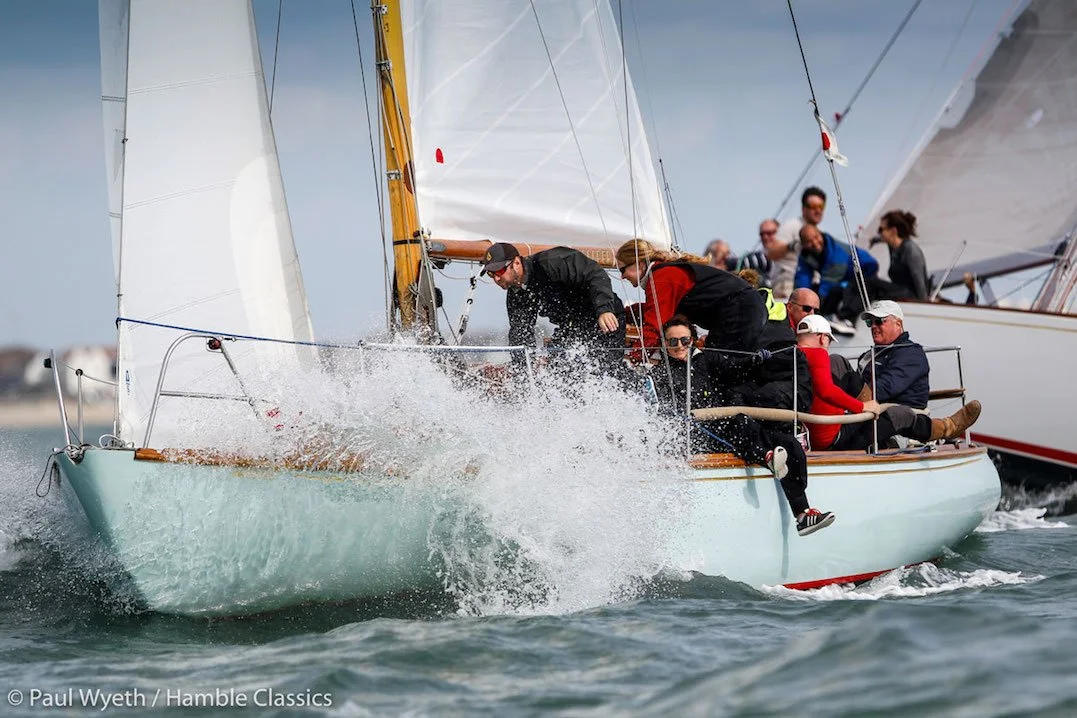Genuinely Competitive
In the center is the Laurent Giles 39 Classic WHOOPER amongst comtempory rivals - photo © Paul Wyeth/RORC
I love this photograph taken at this years RORC Easter Challenge. I’ll come back to WHOOPER in a moment, but it caused me to reflect on the very rare occasions nowadays, when timber boats are genuinely competitive in mixed fleets.
Here in Australia the only boat that springs to mind is the S&S LOVE & WAR. Just after Christmas when the wind blows from the south you can almost hear the groans from the state of the art, modern boat owners as this three times Sydney Hobart winner climbs inexorably to the top of the IRC leader board.
Apart from LOVE & WAR I’m struggling to think of another timber yacht, worldwide that can still hold her own, under modern rating rules. That’s why the achievements of WHOOPER are so remarkable.
WHOOPER
Image Guido Cantini
Sail No: GBR363R
Launch Date: 1939
Type: Laurent Giles One-Off Sloop
Owner: Giovanni & Christine Belgrano
Designer:Laurent Giles
Builder: Woodnutts, IW
Construction: Pitch pine of oak frames
LOA/LWL: 11.9m / 9.4m
Beam: 3.1m
Draft: 1.7m
Displacement: 7.3 Tonnes
Built as a shallow-draft yacht, WHOOPER was mostly cruised, but her natural reaching and downwind speed exceeded expectations. Anecdotes from Peter Bruce recall crossings back from the Channel Islands in the 1960’s, at average speeds over 10 knots! Her unusual hull shape and rig proportions were well ahead of her time, and in conditions that suit her, she has achieved great racing results, most notably winning the Round The Island Gold Roman Bowl in 2004, Cowes Week in 2004, 2014 and 2017, and the overall Panerai British Classic Week in 2014, 2016, 2017 and 2019.
WHOOPER has undergone continuous maintenance and upgrades for looks, longevity, and ease of sailing. Her previous owner rescued her from Ireland in the 1980’s in a derelict state and refitted her at Attrill’s as a safe cruiser. Giovanni bought her 20+ years ago in need of attention, replacing rusting iron floors with timber, the iron keel to lead, increased the centreboard and rudder area to reduce leeway, and replaced the furling genoa with non-overlapping jibs, on a clean spruce mast - the last one built by Spencer’s by the fully traditional method (no epoxy). Recently the galley and aft bridge-deck was re-built to the original layout, restoring the originally intended open layout. She is currently equipped with the latest technology sails and set-up to race competitively at the top of modern fleets, but she also used for weekend cruising, thanks to hot-water and heating. All these refits have been done by the Attrill’s in St Helens Isle of Wight, their father was foreman when she was built next-door (Woodnutts).






